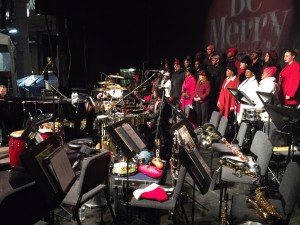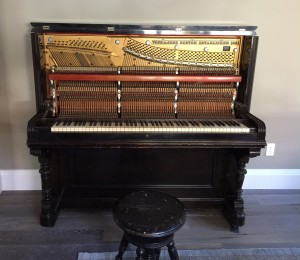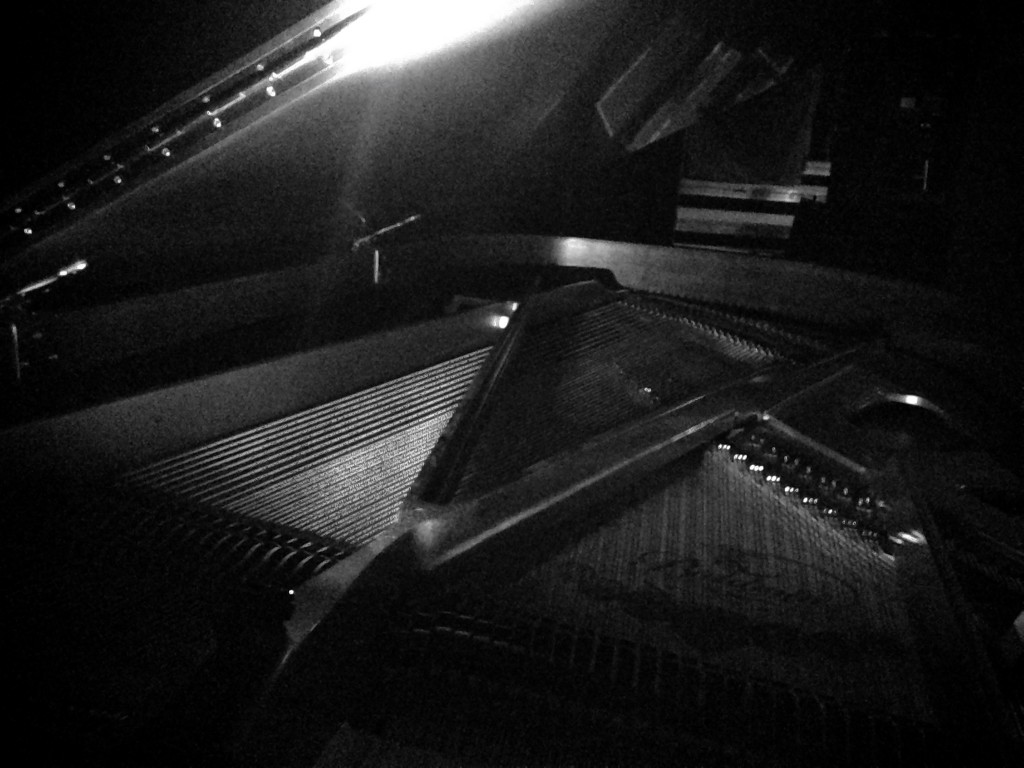The day after Thanksgiving I had the dubious honor of tuning the piano onstage for the tree lighting festivities at Pioneer Courthouse Square. This kind of events is always an interesting experience with lots of unknown factors for me as the piano’s caretaker.
The first disadvantage for this kind of event is the weather. Any outside event is going to present a tuning challenge. If it is cold or hot, or humid or dry, the piano will throw a fit and go way out of tune and in most cases, keep going out of tune as fast as I can tune it! This event was cold. High 30’s I think. And it was also wet! I had rain blowing in on me while I was tuning and even hitting the piano occasionally!
The next disadvantage for event tunings is you never know how much time you will have. I got there early and the performing group was warming up and testing the sound system. I was supposed to tune at 4:30 and they were still singing when 4:30 came and went. When I got on stage and started to tune, I overheard the group’s director talking with the TV newsman and learned I only had about 15 minutes to work! It normally takes about an hour to tune a piano in the best of conditions!
You also never know what the background sound level will be when tuning for an event. I’ve tuned over sound checks, white noise (the worst), or even pressure washers! In this case the newsman was riling up the crowd and making them scream getting ready for his clip he was going to take in a few minutes. The bass player made eye contact with me and just shook his head.
So I had 15 minutes, the environment was horrible for the piano, and I could hardly hear to tune over the high noise level!
I just had to stick my head down inside this poor Steinway and work through the piano, tuning the worst notes until I ran out of time. In this kind of scenario, if they haven’t planned well for the tuner, I just have to do the best I can with the hand I get dealt! The piano sounded decent when I was done, but certainly wasn’t perfect. But, even if I had done a perfect tuning, within 20 minutes, there would have been notes out of tune just because of the cold!
Oh well. It was an adventure.
This video was from last year’s ceremony, but Pink Martini performed this year as well. I hope the piano sounded good for them!






